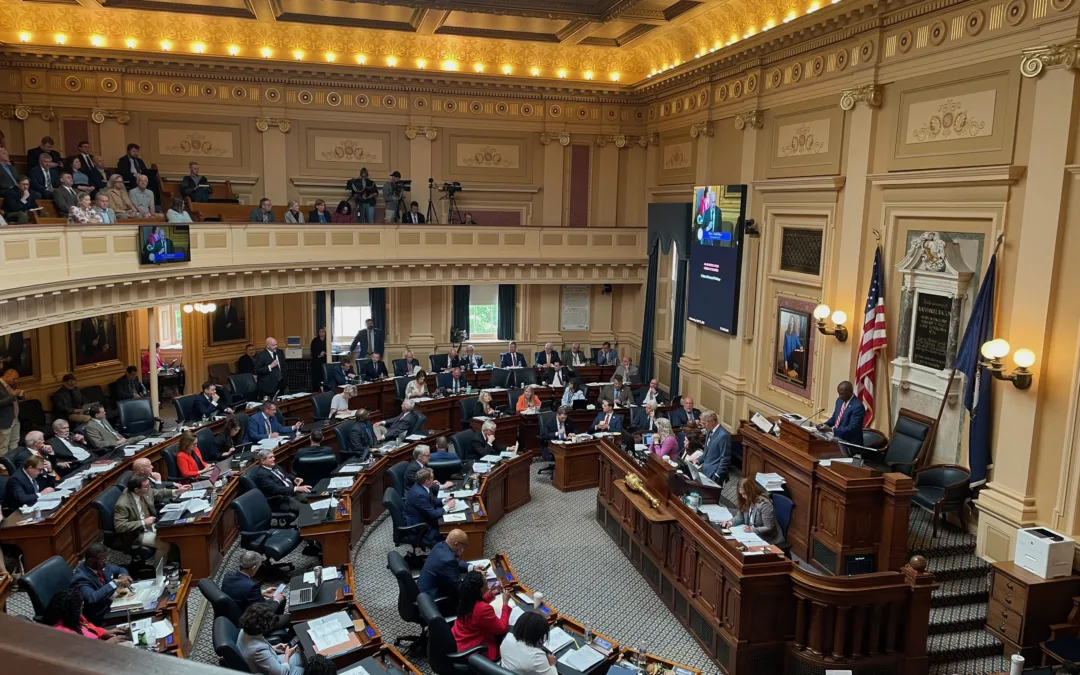
Per Bengtsson|Shutterstock.com
A quarter of 85 school divisions surveyed had a chronic absenteeism rate of over 25%
by Nathaniel Cline, Virginia Mercury
Virginia education leaders are mulling another temporary pause in the use of chronic absenteeism as a factor the state considers in school accreditation decisions because of increases in student absences due to the spread of COVID-19 and other respiratory illnesses.
Chronic absenteeism, defined as a student being absent for 10% or more of the academic year, is one of nine factors the state looks at when determining whether a school should be accredited, or designated as meeting the state’s educational standards.
The move wouldn’t be unprecedented. Last April, the Board of Education agreed to suspend the use of chronic absenteeism as a factor in accreditation for the 2022-23 school year due to similar concerns.
Virginia’s chronic absenteeism rate is more than four times higher this school year than it was in the two years before the pandemic, according to a survey by the Virginia Association of School Superintendents.
According to the VASS data, approximately a quarter of 85 school divisions surveyed had a chronic absenteeism rate of over 25%. The Virginia Department of Education has said approximately 2% to 4% of the state’s 132 school divisions had that level of chronic absenteeism in the two years before the pandemic.
On March 23, the Department of Education recommended to the board that it suspend the chronic absenteeism indicator for the 2023-24 school year. A memo stated that “due to the lingering impacts created by the COVID-19 pandemic, school division leaders continue to report increased absences despite the programs and procedures put in place to address chronic absenteeism.”
However, the recommendation was met with varied reactions.
“I think this is a very mixed message we are sending across the commonwealth, and I’m just having a hard time being able to come to grips on how I can support this,” said Bill Hansen, an appointee of Republican Gov. Glenn Youngkin, at a March 23 meeting. “As we’re trying to address challenges such as this, we [need to] have a clearer understanding of where the priorities of the districts and the state are.”
Virginia began including chronic absenteeism in its accreditation decisions in 2018, after the Board of Education revised the accreditation guidelines the prior year. The change received some pushback at the time, said Board President Daniel Gecker, an appointee of Democratic Gov. Terry McAuliffe.
However, he said, between the time the new accreditation standards went into effect and the beginning of the pandemic, absenteeism rates decreased in certain parts of the commonwealth.
“We always hear from the locals that ‘we know our schools’ and ‘we know our kids and let us do what we need to do,’” Gecker said. By adding absenteeism as a factor in the standards instead of imposing specific attendance policies on districts, he said, the board turned it over to the school divisions to “do what needs to be done in order to get kids in seats.”
‘One Less Thing That the School Divisions Have to Fight For’
Supporters of suspending the chronic absenteeism factor another year say the change is necessary because school divisions have exhausted their efforts to meet the state requirement.
Scott Brabrand, executive director of the superintendents association, said the association supports eliminating the chronic absenteeism factor from the current accreditation framework.
“Despite our school divisions’ best efforts, the lingering effects of COVID, combined with increased rates of flu and [respiratory syncytial virus] this year, kept absenteeism rates high and a continued suspension of this chronic absenteeism indicator is appropriate,” Brabrand said in an email to the Mercury.
The surge of cases began in September, Dr. Shari Barkin, physician-in-chief for the Children’s Hospital of Richmond, told the Mercury in October. Typically cases of the flu rise in December and January.
Board member Dale Sturdifen, a Youngkin appointee, similarly said March 23 that schools shouldn’t be faulted for decisions by parents to keep their children out of the classroom.
“This will be one less thing that the school divisions have to fight for as far as being penalized,” Sturdifen said. “When that kid comes in school, the teachers teach. They shouldn’t be penalized because a parent chooses at some point not to send their child to school because they have other obligations.”
A Return to Accountability
But other board members said they are concerned with the prospect of not considering chronic absenteeism in accreditation for another year even as the state is urging students to return to the classroom.
“We’ve made exceptions during the heart of the pandemic and now we are at a point where we’re managing and learning to live with this thing,” said board member Anne Holton, an appointee of former Democratic Gov. Ralph Northam. “Let’s get back to letting this accountability system have a shot at working.
Board member Pamela Davis-Vaught, another Northam appointee, said the board should also be mindful that some of the students missing school are coming from impoverished communities in Virginia and homes that don’t prioritize education. She said students with mental health issues and disabilities also face barriers in getting to school that should be addressed.
“There’s more at stake here in the community, in the locality, for these children,” Davis-Vaught said. “Elementary-aged children … they technically cannot get themselves up and out the door to get on that school bus. That is the responsibility of a parent and a lot of times that doesn’t exist in these communities.”
Absenteeism and Student Success
Researchers at the University of Virginia have connected chronic absenteeism to student success over the last several years.
Chronic absenteeism rates are particularly high in Virginia among high schoolers, low-performing students and students who move between schools, according to a September 2016 report from EdPolicy Works, a research center at the University of Virginia.
“If students are not in school, they are not receiving instruction and may fall behind their peers,” the report states. “Students who struggle academically may disengage from school putting them at greater risk of excessive absences.”
Charles Pyle, a spokesperson for the Virginia Department of Education, said school divisions across the state have used federal pandemic relief funds to address attendance, but said the agency does not track each division’s particular spending decisions.
Last October, Youngkin urged school divisions to spend their remaining funds to address achievement gaps and proficiency declines among Virginia students. Legislative efforts to require school divisions to spend the funds by July 1 or forfeit them failed.
Amy Siepka, director of VDOE’s Office of Accountability, said the agency has been offering divisions webinars and a course geared toward improving classroom attendance. The state’s ENGAGE Virginia program also aims to provide students with an academic success coach to help them navigate academic and life challenges, ensuring children remain on track and in school.
“There has been quite a bit of involvement by school leaders in this process,” Siepka said. “And the feedback we’ve been getting is —regardless of all of the supports they are putting into place — they’re still having issues.”
Virginia Mercury is part of States Newsroom, a network of news bureaus supported by grants and a coalition of donors as a 501c(3) public charity. Virginia Mercury maintains editorial independence. Contact Editor Sarah Vogelsong for questions: [email protected]. Follow Virginia Mercury on Facebook and Twitter.
Politics

Youngkin, Democrats to start over on budget talks
The Republican governor stood with Democratic leaders in the General Assembly on Wednesday in a bid to ease tensions over their budget debate....

VIDEO: Domestic abuse victims speak out against the gun law bills Gov. Glenn Youngkin vetoed
Senate Bill 47 and House Bill 46 aim to close the loophole that allows offenders to transfer their firearms to someone else instead of relinquishing...
Local News

Virginia verses: Celebrating 5 poetic icons for National Poetry Month
There’s no shortage of great writers when it comes to our commonwealth. From the haunting verses of Edgar Allan Poe, who found solace in Richmond's...

Join the fun: Recapping Family Literacy Night’s storybook adventures
When’s the last time you read a book aloud with a loved one? If it’s difficult to answer that question, then maybe it’s time to dust off that TBR...




